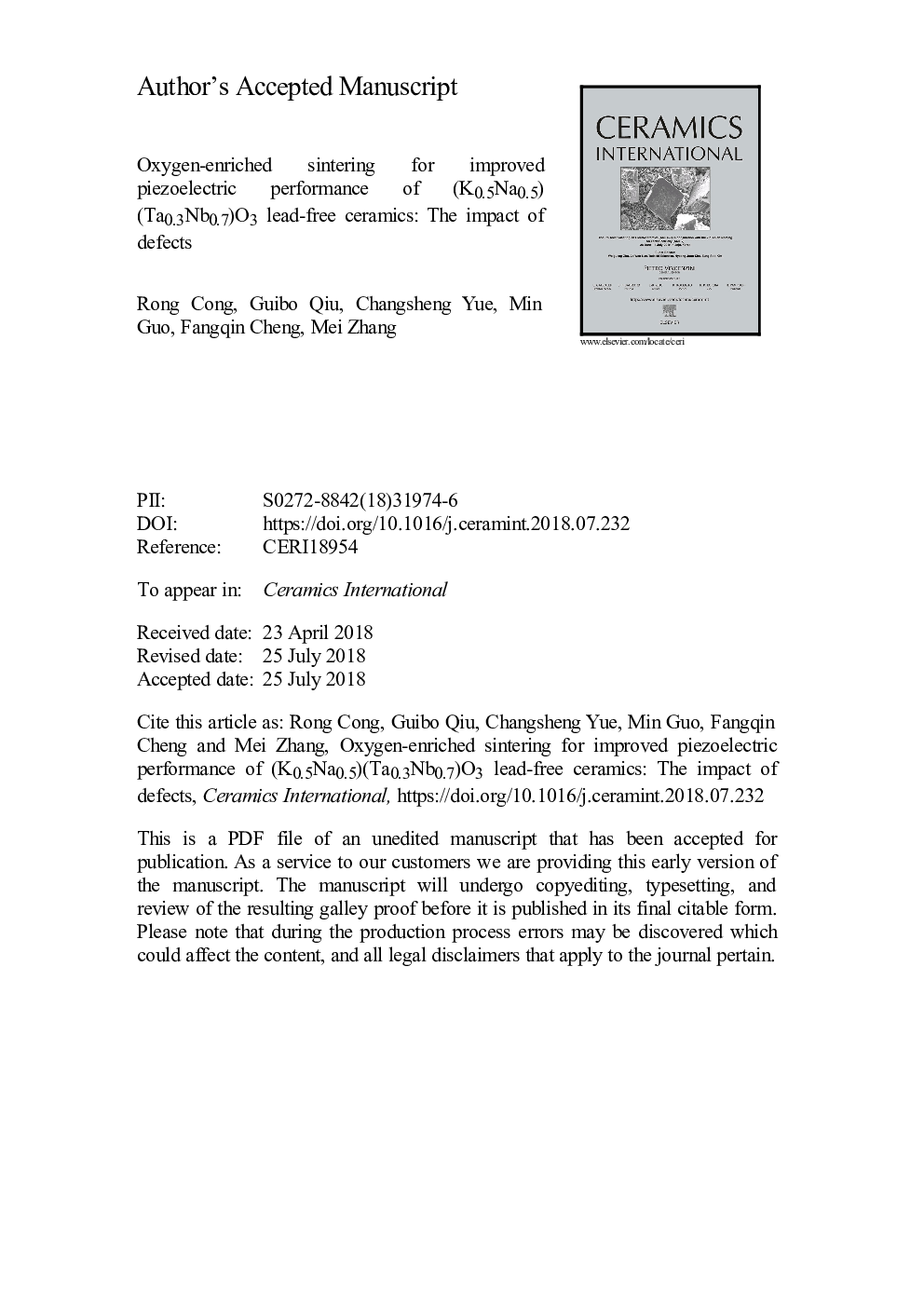| Article ID | Journal | Published Year | Pages | File Type |
|---|---|---|---|---|
| 10155451 | Ceramics International | 2018 | 38 Pages |
Abstract
In this work, (K0.5Na0.5)(Ta0.3Nb0.7)O3 (KNNT) powders synthesized by the microwave-hydrothermal method were sintered under different oxygen partial pressure (PO2 = 0, 0.498, 0.995â¯atm) atmospheres. Effects of PO2 on the phase composition, microstructure, piezoelectric properties, and defects in the KNNT ceramics were investigated by X-ray diffraction (XRD), scanning electron microscopy (SEM), transmission electron microscopy (TEM), X-ray photoelectron spectroscopy (XPS), and Ultraviolet-visible diffuse reflectance spectroscopy (UV-Vis DRS). Results indicated that PO2 had almost no effect on the phase structure and grain morphology of KNNT ceramics. Abnormal grain growth was observed with increasing PO2; simultaneously, the density of the ceramics decreased. However, the d33 value reached its maximum of 205 pC/N when sintered at the highest PO2, and kp showed a similar trend. TEM observations indicated that the microscopic domains had the most regular domain orientation at a PO2 of 0.998â¯atm. These phenomena were due to the different oxygen vacancy concentrations caused by varying PO2. UV-Vis DRS revealed that the defect concentration decreased with increasing PO2; moreover, the oxygen vacancy concentrations were determined by XPS to be 23.5%, 21.1%, and 19.1% corresponding to PO2 values of 0, 0.498, and 0.995â¯atm, respectively, indicating that oxygen-enriched sintering can reduce defects and enhance piezoelectric properties.
Related Topics
Physical Sciences and Engineering
Materials Science
Ceramics and Composites
Authors
Rong Cong, Guibo Qiu, Changsheng Yue, Min Guo, Fangqin Cheng, Mei Zhang,
